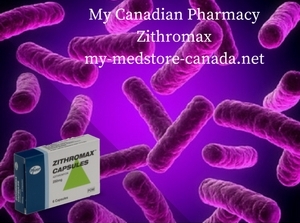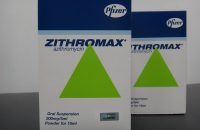What is Zithromax?
Zithromax is an antibiotic of the last generation from the group of macrolides. The drug effectively treats an overwhelming number of pathogens. This agent inhibits the activity of certain components of germs cells that produce proteins, so the agent has bactericidal activity.
[ithshop code=”zithromax” tpl=”short” page_id=”282″ dummy=”txt”]
What pathogens can Zithromax fight?
 This antibiotic is effective in the case of the following pathogens:
This antibiotic is effective in the case of the following pathogens:
- Streptococcus pyogenes (Streptococcus pyogenes);
- pneumococcus (Streptococcus pneumoniae);
- Staphylococcus aureus;
- streptococci C, F, G;
- Staphylococcus epidermidis;
- Legionella;
- chlamydia (Chlamydia pneumoniae);
- the causative agent of gonorrhea (Neisseria gonorrhoeae);
- a causative agent of syphilis (Treponema pallidum).
Zithromax is inactive against Gram-positive bacteria resistant to its main component.
Indications for use
Zithromax is used in the following cases:
- Sinusitis, pharyngitis, tonsillitis, otitis media, and other bacterial infections of the respiratory system, provoked by micro-organisms, responding to drug;
- Bronchitis of infectious etiology in acute form, chronic bronchitis in acute exacerbation, including its atypical form;
- Impetigo, Lyme disease, erysipelas;
- Diseases of urinary excretion of microbial origin (cervicitis, urethritis);
- The defeat of stomach and duodenum Helicobacter pylori infection.
Pharmacologic effect
Zithromax is a broad-spectrum antibiotic, antibiotic-azalide, representative of a new subgroup of macrolide antibiotics. It produces an anti-bactericidal effect in the area of inflammation.
Pharmacokinetics
Absorption. Zithromax is rapidly absorbed in gastrointestinal tract walls, due to its stability in acidic medium and lipophilicity. After oral administration of 500 mg its maximum concentration in plasma is reached after 2.5 hours, -2.96 and 0.4 mg / l. Bioavailability is 37%.
Mechanism of action
Zithromax penetrates well into respiratory tract, genitourinary organs and tissues (in particular in prostate gland), skin and soft tissue. The high concentration in tissues (10-50 times higher than in blood plasma) and a long half-life of the agent are subject due to low binding to plasma proteins, and its ability to penetrate into eukaryotic cells and concentrated in a low pH environment, environmental lysosomes.
This, in turn, defines a large apparent volume of distribution (31.1 l / kg) and high plasma clearance. The ability of this medication to accumulate mainly in lysosomes is particularly important to eliminate intracellular pathogens. It is proved that phagocytes deliver Zithromax to infection localization where it is released in process of phagocytosis. Its concentration in infection localization was significantly higher than in healthy tissue (on average 24-34%) and correlated with the degree of inflammatory edema. Despite the high concentration in phagocytes, the antibiotic has no significant effect on their function.
The agent remains in bactericidal concentrations of inflammation within 5-7 days after the last dose, which allowed development of short (3-day and 5-day) courses of treatment.
Excretion
Excretion from plasma passes in 2 stages: half-life of 14-20 hours in a range of 8 to 24 hours after dosing, and 41 h – in a range from 24 to 72 hours, which allows to use the drug once a day.
Release form
Available dosages of Zithromax:
- 500 mg pills №3.
- 125 mg №6.
- 250 mg capsules №6.
- vial 20 ml and powder for oral suspension (syrup) 100 mg / 5 ml.
- vial 20 ml and 30 ml of powder for oral suspension (syrup) forte 200 mg / 5 ml.
You can buy Zithromax online at this page. Our online pharmacy is glad to provide you with all necessary medications to overcome various diseases’ types.







